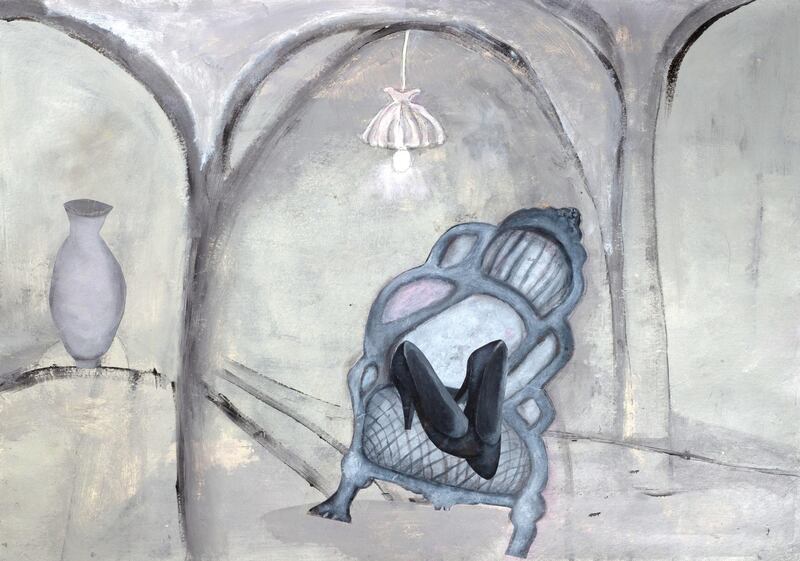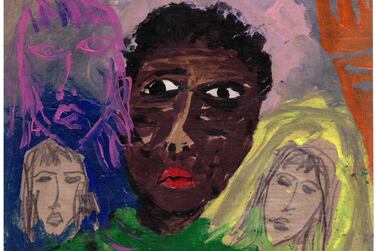The downtown campus of the American University of Cairo (AUC) was founded in 1919 in the city's notorious Tahrir Square and has been part Cairo's cultural fabric ever since.
Inside, the two-level Ewart Hall hosts events for up to 1,000 people and serves as a gathering place for fans of all forms of art and culture, including literature, theatre, music and film.
Among the prominent figures who have stood on its stage are legendary Egyptian singer Umm Kulthum and renowned French vocalist Edith Piaf; influential scholars Taha Hussein, Arnold Toynbee and Edward Said; and American politicians Jimmy Carter, Condoleezza Rice and Hillary Clinton. One of the lesser-told stories about Ewart Hall, however, is that of Doria Shafik, an Egyptian feminist and the founder of the Bint Al Nil Movement. On February 19, 1951, Shafik gave a rousing speech to 1,500 women in the venue. They then marched down the city’s Qasr El Eyni Street and through the marble gates of the parliament building, protesting against the male dominance of politics and demanding equal rights. Thanks to that bravery and resilience, Egyptian women gained the right to vote and to participate in government.
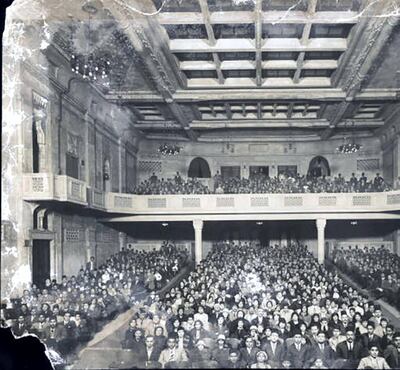
Shafik, however, was placed under house arrest in 1957 and, due to her implacable opposition of the country's patriarchal structure, her story was virtually erased from history. Now, however, that narrative is re-emerging. In August 2018, The New York Times published her obituary in its Overlooked series, which tells the "stories of remarkable people whose deaths went unreported". Shafik also caught the attention of Sherin Guirguis, an Egyptian artist who was born in Luxor but lives and works in Los Angeles, and who chronicles neglected feminist histories.
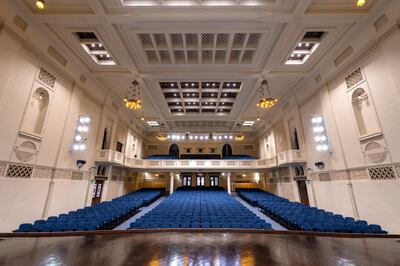
Guirguis's two years of research on Shafik's life inspired a body of work that was shown at the LA Craft and Folk Museum from September 2018 to January this year. This month, the newly renovated Tahrir Cultural Centre (TCC) at AUC's Tahrir Square campus will unveil some of the works from that exhibition and several new pieces for the show Bint Al Nil / Daughter of the Nile as part of the university's centennial celebrations. The exhibition includes Storming Parliament, a series of artworks made from intricate patterns cut from paper reflecting the design of the gates of the Egyptian parliament building partially covered with splashes of deep-blue ink, symbolising the waters of the Nile. Two other works are made from paper cuttings in patterns that match the fence surrounding Azbakeya Gardens, where Shafik – at only 19 years old – gave her first feminist speech. These are decorated with circular ancient Egyptian motifs, which Guirguis says connect the past to the present. "The symbols act as a bridge between ancient history, the 1950s and today," she says. "I grew up with ancient Egyptian art all around me in Luxor, so they also have a personal connection."
Guirguis's exhibition and homage to Shafik will be mounted in the TCC's Future and Legacy Galleries, just metres away from Ewart Hall. The work of Huda Lutfi, another prestigious Egyptian artist, will be on show as part of the exhibition When Dreams Call for Silence, in the centre's Margo Veillon Gallery.
Lutfi was a professor of Islamic culture and history at AUC for 25 years before leaving to pursue her artistic career. Her first exhibition was held at the Tahrir campus. Her works are now in major international collections such as at The British Museum in London, The Los Angeles County Museum of Art, and the Museum of Modern Art in the Hague. She also regularly shows her work across the region, and both Lutfi and Guirguis are represented by The Third Line Gallery in Dubai.
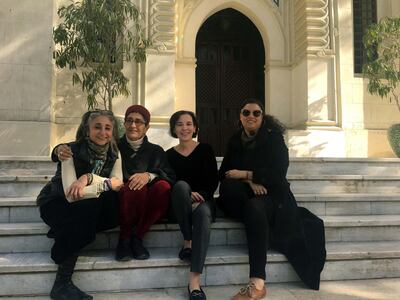
Shiva Balaghi, the newly appointed senior advisor for AUC's arts and cultural programmes, curated both these presentations. "These are two completely different exhibitions, but together, they touch on so many current issues: the relationship between history and life today; the relationship between an artist and society; and the importance of creativity in tumultuous times," says Balaghi, a scholar who taught contemporary Middle Eastern cultural history at NYU and Brown University in the United States for two decades.
Furthermore, the shows signify the strength of the arts and cultural landscape of Cairo and wider Egypt. Since President Hosni Mubarak was overthrown in 2011, and the 18 days of landmark protests in Tahrir Square, the revolutionary spirit has been challenged by a rising tide of religious and political conservatism. Yet, the arts and cultural scene appears to remain resilient.
AUC’s president, Francis Ricciardone, says that Egypt is “the millennial fountainhead of creativity and the arts in this region”, adding that the two inaugural exhibitions “offer hope for the possibility of a renaissance”.
Ricciardone also lauds Naguib Sawiris, an art collector and patron, whose foundation made the renovations of the TCC possible, as a “visionary”.
Balaghi says that the aim for the centre is part of the university’s holistic outlook on education. “The overall goal is to graduate citizens with a high degree of cultural literacy so that whatever their field of study, they have been exposed to contemporary art, theatre, music and opera. We want to integrate culture as a central element.”
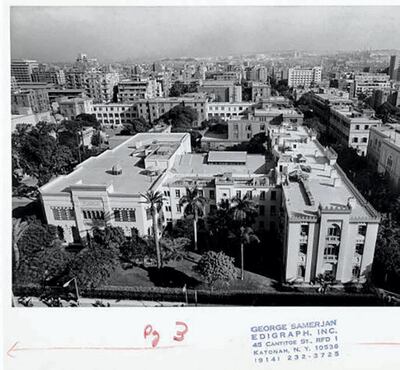
In that regard, there could be no better choice than the work of Huda Lutfi to launch this new centre. Her personal history with the institution, her successful career, and her powerful artistic voice make her a role model and an important cultural commentator.
When Dreams Call for Silence is a collection of new drawings and paintings, sculptures and installations that portray dream-like landscapes and deeply personal portraits. “Rendered in sombre hues of grey, black, and lavender with touches of silver, the works veer between the quotidian and the surreal,” says Balaghi. “They offer a reconciliation between the interior and exterior lives of the artist.”
While the shows developed organically from Balaghi’s personal connections, knowledge and experience, as the concepts came together and as her curatorial delving went deeper, the more connections to the university and its surroundings came to light.
As such, says Balaghi, they make sense on two levels: “On a micro level both artists have connections with AUC, and the Tahrir campus in particular has a personal resonance for them. But, on a macro level, if you step back, their art sheds light on hidden histories.”
Huda Lutfi: When Dreams Call for Silence and Sherin Guirguis: Bint Al Nil open at American University in Cairo tomorrow and run until February 28
